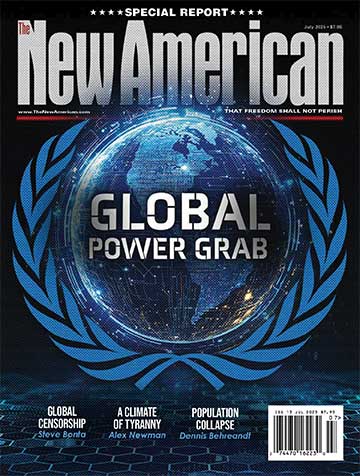
A new peer-reviewed study suggests that much of the observed global warming since 1850 appears to have more to do with urban sprawl than fossil-fuel emissions. Entitled “The Detection and Attribution of Northern Hemisphere Land Surface Warming (1850–2018) in Terms of Human and Natural Factors: Challenges of Inadequate Data,” the study casts doubt on the narrative that mankind’s fossil-fuel emissions are solely responsible for the observed warming during the industrial age.
The study’s authors believe that the Urban Heat Island (UHI) effect, which posits that urban areas are warmer than outlying areas due to the amount of concrete, steel, and other heat-trapping and -relfecting material in cities, may account for up to 40 percent of observed warming since 1850. Obviously, this is much higher than the 10 percent of warming attributed to UHI in the United Nations Intergovernmental Panel on Climate Change’s (IPCC) last report.
The new study surmises that the IPCC’s latest report relies far too heavily on data from urban temperature reporting stations, since urban environments account for only about four percent of global land area.
“Urban areas represent a small fraction of the global land area, yet the land component of the IPCC’s global temperature estimates includes many urbanized weather stations,” the study claims. “As a result, there is concern that they might be contaminated by urbanization bias, i.e., warming biases from the growth of urban heat islands around weather stations.”
They also insist that the role of the Sun is severely undervalued by the IPCC and other mainstream climate models.
“[T]he Total Solar Irradiance (TSI) dataset recommended by the CMIP6 organizers for estimating past solar activity, is a ‘low solar variability’ estimate, just like the four datasets considered by the CMIP5 modeling groups for AR5, and implies a much smaller role for the Sun than using a ‘high solar variability’ dataset.”
In other words, the IPCC and other climate cultists overvalue greenhouse-gas emissions and undervalue the role of the Sun in the warming of the Earth.
So, is the “debate over,” as carbon-credit salesman Al Gore and climate “czar” John Kerry like to say? Or is there still more studying to be done before we scrap all fossil fuels, destroy our economy, and “reset” the entire global community?
“For many years, the general public has been assuming that the science on climate change is settled. This new study shows that this is not the case,” said Dr. Willie Soon, the lead author of the study.
The study’s authors hope that the new research will allow for some rethinking of the entire climate-change issue and possibly allow for some fresh debate on the subject of climate change.
“This analysis opens the door to a proper scientific investigation into the causes of climate change,” said study co-author Prof. Ana Elias of the Universidad Nacional de Tucumán in Argentina.
However, it would appear that many in the the climate cult are unwilling to even allow for the questioning of their long-settled “consensus” on the issue of climate change.
“The urban heat island effect is real, well-known & accounted for in the global temperature data products,” said Professsor Stefan Rahmstorf of the Potsdam Institute for Climate Impact Research. Rather than engaging with the results of the paper, Rahmsorf chose character assassination instead: “The reputation of MDPI journals is questionable; that of the paper authors even more.”
Greenpeace co-founder turned climate realist Patrick Moore, another co-author of the study, retorted, “Yes, we know the urban heat island effect is real, and that it exaggerates the temperature record of the non-urban part of the planet, about 98% of the planet. So do you accept that when the urban stations are removed it cools the planet by 40% of the supposed rise?”
Another IPCC co-author, Exeter’s Richard Betts, complained, “You’ve not studied the whole planet though — your claim of 40% reduced rise only applies to selected areas. Your use of ‘cools the planet’ gives a false impression that you did a global study.”
Talk about the pot calling the kettle black. The IPCC and other climate-alarmist groups routinely use incomplete or outdated/unreliable datasets to arrive at their spurious conclusions.
It’s not the first time the climate cult’s reliance on inconsistent or incomplete data has been exposed. Recall that last year, the Heartland Institute published a report on just how flawed the U.S. temperature record really was.
Unfortunately, the new study’s reach will be limited by the stubbornness of the climate cult and their never-ending need to be seen as “the science.” Perhaps, however, the new study will inspire more defections from the climate cult.





